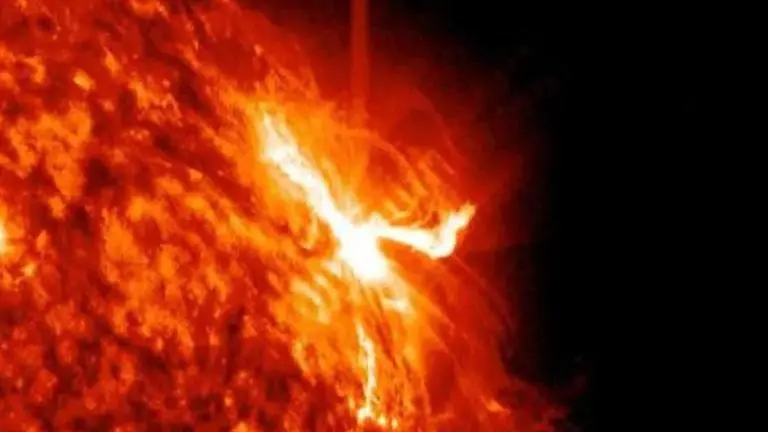Updated 6 March 2023 at 22:11 IST
NASA finds sunspot emitting M-class solar flares; crack spotted in Earth’s magnetic field
A report has revealed that the sun has turned hotter due to its solar cycle 29. This comes days after volatile solar activity caused radio blackouts.
- Science News
- 2 min read

A report has revealed that the Sun has turned hotter due to its Solar Cycle 29. This comes days after volatile solar activity caused radio blackouts over North and South America due to an unstable sunspot. According to spaceweather.com, the NASA Solar Dynamics Observatory (SDO) found another new sunspot that is releasing dangerous M-class solar flares. David Leong from Singapore was the first to observe a new sunspot using a telescope at the solar surface and saw an explosion.
A NEW SOURCE OF FLARES: New sunspot AR3242 is magnetically complex and crackling with M-class solar flares. Yesterday in Hong Kong, David Leong pointed his solar telescope at the sun and immediately saw an explosion: pic.twitter.com/UivyUMEgZQ
— JimeV Augmented Mouse (@Jelwoodv) March 5, 2023
Sunspot unleashes M-Class Solar flares
Speaking to spaceweather.com, Leong said, "AR3242 was already flaring when I started shooting at 5:11 UT. The unusually dark filaments kept changing shape minute by minute on my computer screen. It was an hour of wonder and excitement." Although most solar activity emanating from the Sun is protected by Earth's magnetic field, the experts found a crack in that field that could allow dangerous solar winds to enter.
During the Vernal Equinox, the Sun comes directly above the equator, causing the day and night to be of the same duration, leading to semiannual variation in the effective southward component of the interplanetary field. Cracks form in the Earth's magnetic field, which could allow even weak solar winds to seep through.
What are M-class flares?
Notably, M-class flares are categorised as medium-sized, and these events can cause brief radio blackouts. Bright flashes of light were seen coming from the sunspot, the likely culprit that sent the shock wave toward Earth. The shock waves erupt when a fast-moving pulse of solar wind moves through the slow-moving solar wind and consists of compressed and heated gasses. These types of eruptions can trigger space weather that can interfere with satellites and power grids on Earth and be harmful to unprotected astronauts.
Advertisement
Published By : Amrit Burman
Published On: 6 March 2023 at 22:09 IST
